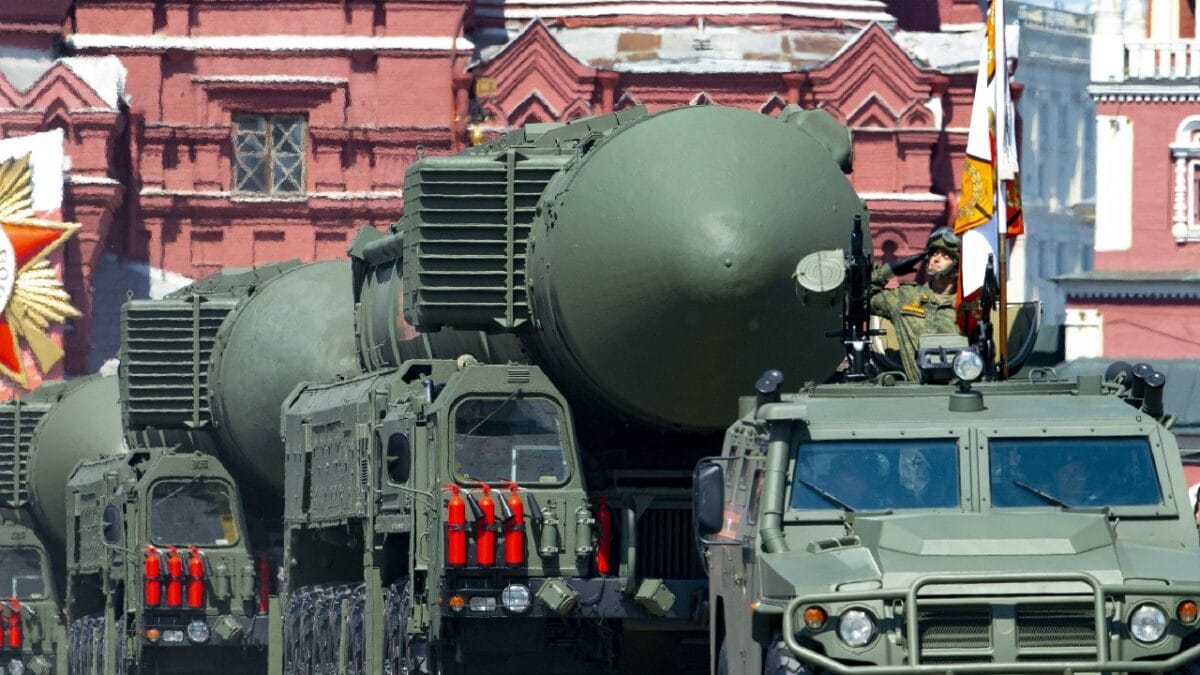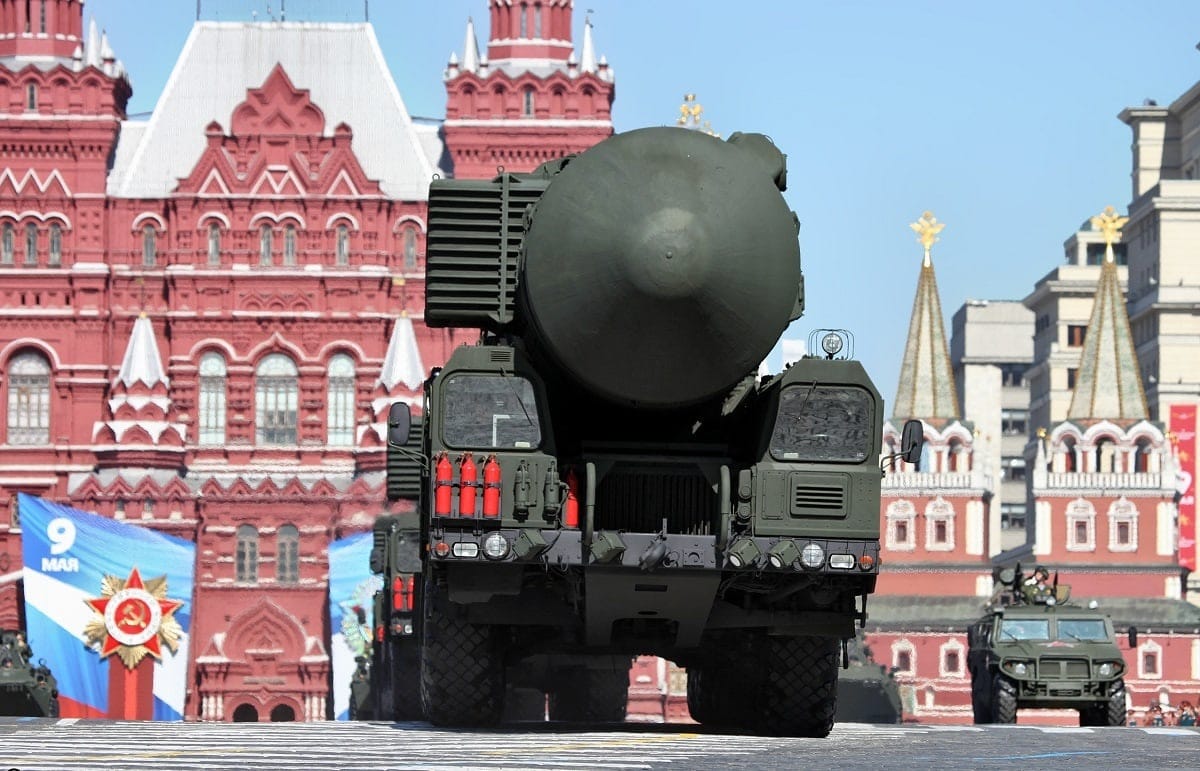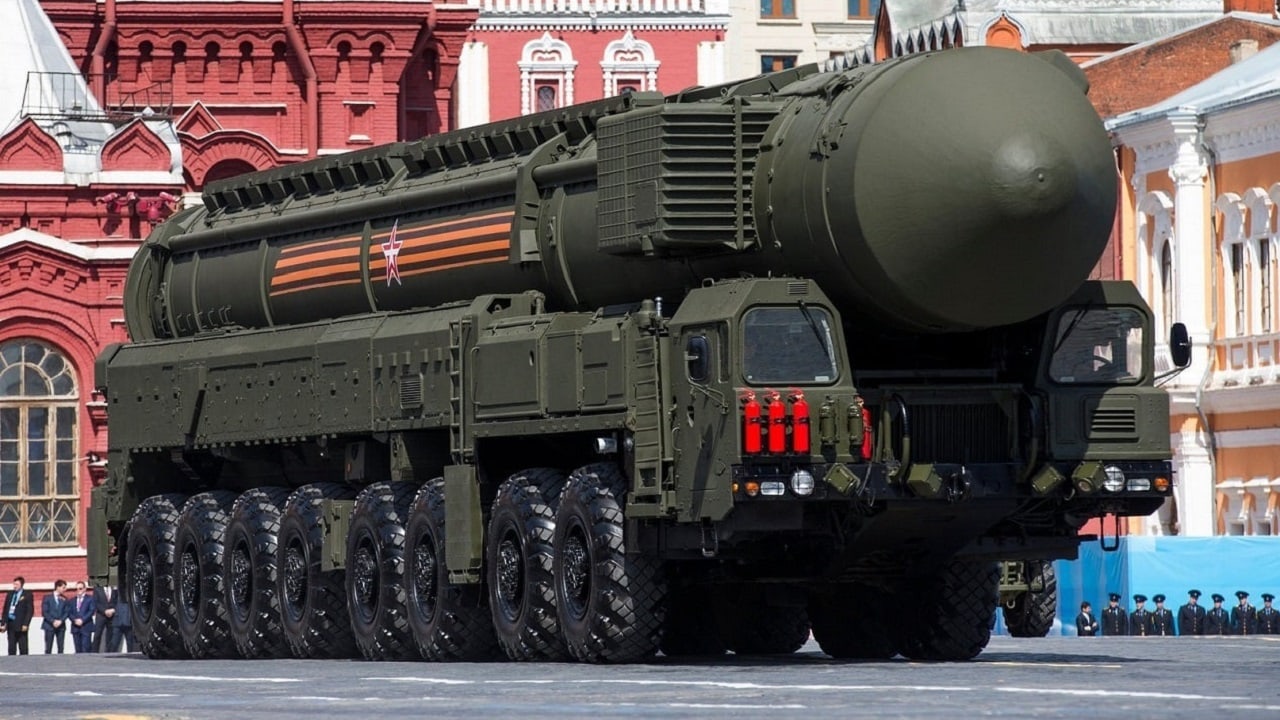How the US military can prepare and deter the unthinkable: A dozen days into the invasion of Ukraine, it has become clear that Russia only has two strategic assets of any consequence: fossil fuels and nuclear weapons.
There are easy workarounds to make up for the loss of access to Russian oil and gas; nuclear weapons are another matter.
The mediocre performance of Russian conventional forces in Ukraine underscores how dependent Vladimir Putin is on the threat of nuclear war to accomplish his military goals in Europe.
When NATO leaders say they will not enforce a no-fly zone or bomb invading troops in Ukraine for fear of provoking World War Three, what they mean is they fear provoking nuclear war.
Without his nuclear weapons, Putin would pose little threat to the West or anybody else.
His repeated allusions to Russia’s nuclear might since the crisis began, echoed by Foreign Minister Lavrov and Russian media, reflect Putin’s awareness of this fact.
Moscow’s reliance on nuclear threats will not go away when Ukraine is overrun; further incursions in places like the Baltic states, as per his demands of NATO, will be accompanied by new warnings concerning the possible use of Russia’s nuclear forces.
What will NATO do then? Run the risk of losing New York or Paris or Rome to save Riga?
That is the commitment that underpins NATO’s posture of extended deterrence, but the commitment isn’t credible, and if it were credible, it would be very unpopular with Western voters.
The only way out of this dilemma is to negate the threat posed by Russia’s nuclear arsenal through some form of active defense.
In other words, instead of trying to address the danger of nuclear use by relying solely on the threat of massive retaliation, the United States and its allies need a means of blunting any nuclear aggression.
The received wisdom in West on this subject has been that any such effort is foolhardy because the destructive power of each Russian warhead is so great that a mere handful could wreck our society.
Defense, therefore, has to be nearly 100% effective to be worth pursuing.
However, technology has advanced by leaps and bounds since the doctrine of mutually assured destruction was first formalized, and Washington has not seriously contemplated what might be feasible in the way of defenses today.
More importantly, our current offensively-based strategy of deterrence cannot cope with easily imaginable scenarios that could arise in the future, such as an irrational adversary or an accidental launch.
So, let’s imagine that U.S. leaders decided to stop wasting money on military adventures in places like Southwest Asia and instead invested the saved money in a real defense of America.

Russian Nuclear Weapons. The image is of a Russian Mobile ICBM. Image Credit – Creative Commons.
Even if Europe were left totally undefended, the awareness that America is actively defended would greatly strengthen the credibility of extended deterrence.
Here are five basic principles that should guide any effort to defend the American homeland against a Russian nuclear attack.
The defense must be layered. No line of defense is perfect. But several lines of defense can be highly effective, especially when they utilize diverse technologies to engage attackers.
For instance, if the U.S. were to construct three layers of defense that incoming warheads must penetrate, and each one was 80% effective, then less than 1% of attackers would actually reach their targets. In an attack of 300 warheads (20% of the Russian long-range arsenal), only two warheads would get through.
The defense must be resilient. To be effective, all elements of the defensive architecture must be able to survive a nuclear attack and keep functioning. This can be accomplished by mobilizing sensors and interception systems, for example, relying on Aegis warships at sea and proliferated, low-cost satellites in orbit for sensing.
Assuring survivable battle management and communications would not be difficult, even in a nuclear environment—especially if the defensive system is sufficiently robust to engage the vast majority of attacking warheads.
The defense must have a cost advantage. In other words, it must be easier for the defender to build additional defenses than for the aggressor to build additional offensive forces. This does not necessarily mean that each interception system must be cheaper than each attacking warhead because U.S. economic resources are so much greater than Russia’s.
But the cost of growing defenses must be sufficiently affordable that they cannot be overcome by proliferating Russian warheads. If the defense has a relative cost advantage, then Russia cannot gain an edge by engaging in an arms race.
The defense must include directed energy weapons. The easiest way of giving the defense a cost advantage is by relying heavily on directed energy as a kill mechanism. Current U.S. missile defenses depend on costly interception systems that are intrinsically more expensive than the warheads they engage.

Topol-M Missile – By Vitaly V. Kuzmin.
The obvious fix is to rely more heavily on high-power lasers, microwave weapons, and the like to defeat incoming warheads. Directed energy weapons can target attacking warheads at the speed of light, cost very little per shot, and have deep magazines—meaning each one can target dozens of attackers in a brief span of time.
The defense must mesh with offensive forces. Having effective defenses does not negate the need for a potent offensive deterrent. The two capabilities are complementary, presenting potential aggressors with powerful incentives to avoid use of nuclear weapons.
The problem with our current posture is that it relies too heavily on offensive forces when we know some threats cannot be prevented solely through the threat of retaliation. In a worst-case scenario, offensive forces can be used to reduce the capabilities of an adversary so as to make the defensive challenge more manageable.
There are huge complexities associated with implementing any such posture. But if we move beyond our current, unprovable belief that deterrence can be made to last forever, then the need for active defense becomes obvious. Vladimir Putin is not the last nuclear adversary we will face.
Loren Thompson is Chief Operating Officer of the non-profit Lexington Institute and Chief Executive Officer of Source Associates. Previously, he was Deputy Director of the Security Studies Program at Georgetown University and taught graduate-level courses in strategy, technology and media affairs at Georgetown, and also taught at Harvard University’s Kennedy School of Government. Loren holds doctoral and masters degrees in government from Georgetown University and a bachelor of science degree in political science from Northeastern University. Disclosure: The Lexington Institute receives funding from many of the nation’s leading defense contractors, including Boeing, General Dynamics, Lockheed Martin and Raytheon Technologies.

